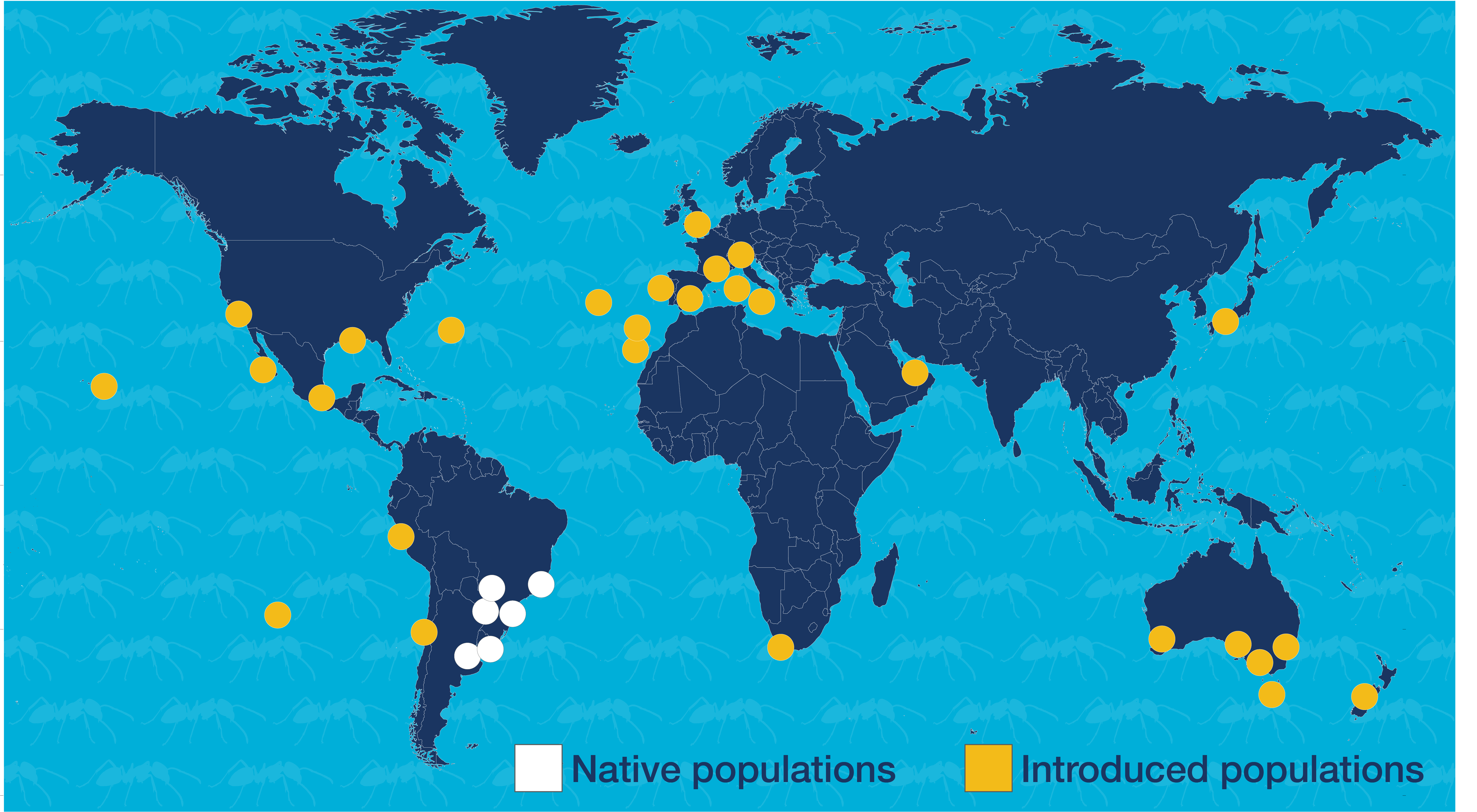Evolution of Social Behavior and Recognition Systems

Some of our central interests include the roles of genetics, chemistry, experience, and learning in the evolution of social behavior. In particular, we are interested in how organisms distinguish self from non-self (in this case, colony members from non-members). Like many other social insects, ants use odor cues (chemicals known as cuticular hydrocarbons) to sniff out individuals who do not belong. We have identified, synthesized, and tested several of these chemicals, and have shown that changing an individual ant’s chemical signature alters how they are treated by nestmates. We have several ongoing projects examining how genetic diversity, genetic similarity, cuticular hydrocarbons, and individual behaviors can interact to produce highly organized and complex societies.
Success of Invasive Species

Biological invasions are a serious threat to global biodiversity, and much of our research is focused on a particularly damaging invader, the Argentine ant (Linepithema humile). Argentine ants have been introduced by humans to many of the world’s Mediterranean-type ecosystems, where they disrupt ecosystems by displacing native species, cause indirect damage to crops by tending parasitic homoptera (such as aphids and scale insects), and are a common household pest. Moreover, introduced populations of Argentine ants are unicolonial, forming massive “supercolonies” that can extend for thousands of kilometers. The lack of aggression and territoriality within these supercolonies allows introduced populations to thrive and dominate invaded habitats. By studying the genetics and behavior of Argentine ants in their native and introduced ranges, we have shown how relatively simple genetic changes can impact higher levels of biological organization, producing altered behavior, novel forms of social organization, and ultimately transforming entire ecosystems. Because many other invasive ants are also unicolonial, the factors that allow Argentine ants to become such successful invaders may also explain the success of many other invasive social insects.
Chemical Ecology
Social insects live in a world full of complex chemical signals. Some of the chemicals that we study are used for things like colony identification or regulating the behavior of colonymates. Many of these chemicals can also serve multiple functions, such as providing resistance to microbial infection or dessication. We use techniques such as gas chromatography-mass spectrometry to identify and describe chemical profiles, and collaborate with chemists who synthesize some of the more interesting candidates for us. These chemicals can then be used in behavioral studies to determine if they evoke the expected behaviors.
Genetics and Genomics
We recently sequenced and published the draft genome sequence of the Argentine ant, and have contributed to several other ant and bee genome sequencing projects. We are now using these resources to study the evolution of social structure, and to develop functional genetic approaches for studying the behavior of various social insects
